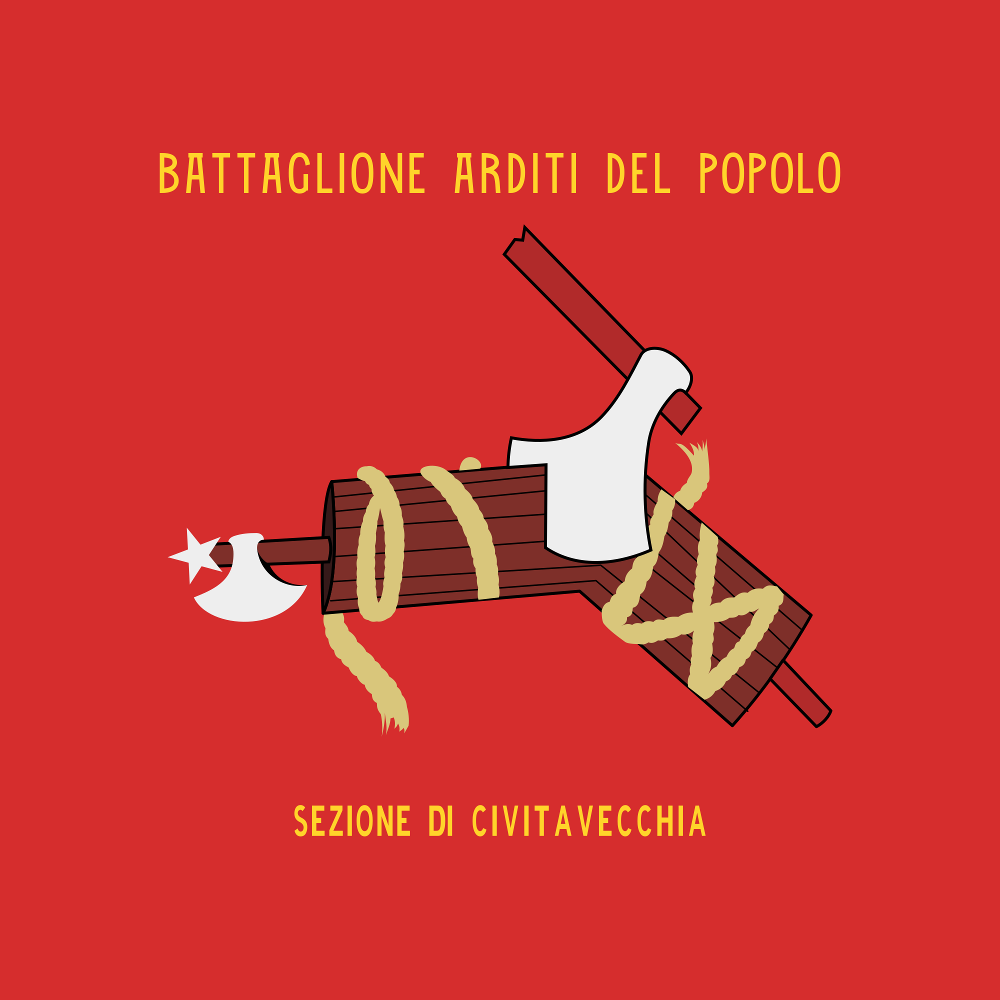Author: Sam Thomas
Introduction
A plague is contaminating contemporary political discourse: the plague of horseshoe theory. Horseshoe theory is a political theory which holds that the far left and far right hold more in common with each other than with the center. The implication the promoters of this theory sneak into their statements is a moral one: the savage, fanatical rabble on the fringes of the far left and far right are immoral and nonsensical, and only the sensible moderates should be taken seriously. For example, Sarah Jones of the New Republic has collected many instances of prominent liberal journalists decrying the “alt-left”.[1] These people use “alt-left” to draw a comparison with the “alt-right” – a rebranding of far-right ideologies like fascism and anti-Semitism. Children’s author and centrist J.K. Rowling was the most succinct promoter of horseshoe theory when, in a tweet, she decried “fascists” on both the left and the right.[2]
In this article, I aim to put to rest this childish notion. I claim not only that the far left (communists) have no political similarity to the far right (fascists), but that a quick glance at the history of the latter shows the two ideologies are violently incompatible. In this piece, I analyze the diametrically opposed nature of these groups both historically and philosophically, which shows why horseshoe theory is devoid of intellectual context and nuance.
A Brief History of the Rise of Fascism in Italy
When the First World War broke out in 1914, Italy was in a defensive alliance with Austria-Hungary[3] and Germany.[4] However, claiming that Austria-Hungary was not upholding the tenets of the agreement, Italy left the alliance and declared neutrality in the conflict. While the Italian Socialist Party (PSI) for the most part agreed with neutrality, then PSI member Benito Mussolini broke from the party line, instead promoting intervention against the Central Powers: Austria-Hungary, Germany, the Ottoman Empire, and Bulgaria.[5] Mussolini’s public support for intervention caused the PSI to expel him from the party in 1914. The next year, Italy entered the war against Austria-Hungary on irredentist[6] grounds, after the Entente[7], particularly the UK, promised parts of Austrian lands[8] should Italy join. After Mussolini served in the Italian Army, he organized wounded veterans into paramilitary groups called Fasci[9] di combattimento (meaning “combat bands”). The goal of these groups was to disrupt and shut down pacifist rallies in Italy. These Fasci would go beyond countering rallies by, for example, setting fire to socialist offices.
The end of the war saw Italy on the winning side, but without as much land as promised.[10] This angered many pro-war Italians, who had advocated entering the war on irredentist grounds.[11] They argued that Italy had suffered more than enough to warrant all promised territorial gains. Taking inspiration from a line of a poem by Gabriele D’Annunzio, many irredentists and nationalists decried the “mutilated victory”. This culminated in D’Annunzio seizing the city of Fiume (present day Rijeka, Croatia)[12] in 1920.
While the nationalists and the right focused on the peace treaty, the left and labor unions went on strike.[13] From 1919 to 1920, Italy experienced the biennio rosso, the red two years, a series of strikes and factory occupations from multiple left-wing groups. However, this period did not entail a socialist revolution in Italy. The moderate wing of the PSI negotiated with the government on reforms, leaving the extreme wing without support.[14] Trotsky places the blame for the failure of the revolution on the social democratic and reformist wing of the party, claiming that “Italian fascism was the immediate outgrowth of the betrayal by the reformists of the uprising of the Italian proletariat.”[15]
The incumbent government was not the only enemy the socialist uprising faced. The Fasci di combattimento used violence and intimidation to suppress labor organizations not only in the cities with factory occupations, but in the countryside as well.[16] As Antonio Gramsci notes, “[The Fasci di combattimento] emerged during the same period [the biennio rosso] when the rural landowners were feeling the need to create a White Guard to tackle the growing workers’ organisations.”[17] Their success saw the end of the biennio rosso and an increase in the popularity of the Fasci.
By 1921, the Fasci had reorganized into the Nationalist Fascist Party (PNF) and its paramilitary wing, the Squadristi. In October of 1922, the Squadristi marched on Rome, demanding that King Vittorio Emanuele II form a new Parliament, with Mussolini as Prime Minister.[18] The King accepted, and a fascist majority led parliament. The next election in 1924 would be the last one Italy saw for over two decades. After the PNF won under suspicious circumstances, opposition Member of Parliament Giacomo Matteotti of the Unitary Socialist Party denounced the fascists.[19] Shortly after, Squadristi assassinated him, but failed to keep his assassination a secret. Thus, in January 1925, Mussolini took responsibility for the murder, and in doing so, removed any power the parliamentary opposition had. From then on, the veneer of democracy disappeared.
The Anti-Communist Nature of Fascism
Only considering this history can we define fascism. That the definition of fascism is vague makes sense; it has become a stand-in word for many forms of totalitarian government. Fascist authors, such as Mussolini and Giovanni Gentile, wrote The Doctrine of Fascism in flowery, sophistic prose, which makes defining fascism an even more arduous task. However, defining fascism is instructive for anyone engaged in political activity.
Walter Benjamin’s thesis that “behind every rise of fascism is a failed revolution” holds true[20]. The rise of Adolf Hitler in Germany[21] occurred after the failure of the November Revolution (an attempted socialist revolution in Germany shortly after the First World War). Mussolini marched on Rome and suspended democracy after the failure of the biennio rosso. Miklos Horthy[22] came to power only after the defeat of the Hungarian Soviet Republic, a communist revolution in Hungary during 1919 which attempted to emulate the Russian Revolution. Francisco Franco’s victory in 1939 came after the fall of the National Confederation of Labor and the Iberian Anarchist Federation (CNT/FAI).[23]
The reason for this phenomenon is simple: fascism is anti-communist. If the normal methods of repression against communists (bourgeois democracy, monarchy, everyday worker suppression) are not sufficient to stop an attempted revolution, the bourgeois will turn to fascist paramilitary groups to stop it. These groups, like the Squadristi, incite violence, intimidation, assassination, and other forms of brutality upon communists. This causes any communist revolutionary activity to halt, and emboldens the fascist paramilitary groups enough to gain state power. Once given state power, a fascist state will further suppress communists.[24] The rise of Hitler saw the outlawing of the KPD[25] and the arrest of its members.[26] Mussolini not only has links to the assassination of Giacomo Matteotti, a socialist politician, but also sent communist politicians and theorists such as Gramsci and Amadeo Bordiga to an island prison. The victory of Franco in the Spanish Civil War saw a White Terror against leftist dissidents that continued until his death in 1975.
That the bourgeoisie would side with those doing violence to communists is sensible, given their desire for self-preservation. Since communists wish to abolish private property, which is something that the bourgeoisie has[27], the bourgeoisie has an economic incentive to suppress communist activity.
More than just being anti-communist violence and repression, fascism is opposed to socialist ideology. Gentile and Mussolini[28]rejected many facets of Marxist thought. They believed that economic materialism is an insufficient model of viewing human action. They state that economic reality “suffice[s] to explain human history to the exclusion of other factors is absurd”.[29]Instead, fascists believe ideas motivate men to do action. More specifically, heroism plays a part for fascist action, they claim “[f]ascism believes now and always in sanctity and heroism… in acts in which no economic motive… is at work”.[30] This runs counter to the socialist conception that economic and material reality is the primary motivator of human action. It further claims that class collaboration is not an impossibility, which contradicts the Marxist idea that economic classes have diametrically opposed interests. For Gentile and Mussolini, fascism “denies that the class struggle is the preponderating agent in social transformations”.[31] For fascism, the conception of state is important, so it rejects the internationalism of socialism. The two men state that “[f]ascism is… opposed to Socialism to which unity within the State (which amalgamates classes into a single economic and ethical reality) is unknown, and which sees in history nothing but the class struggle”.[32] To combat the Marxist view of socialism, Mussolini advocated for the state to bring into its orbit not only the bourgeoisie, but also trade unions, “giving them due weight in the guild or corporative system in which divergent interests are coordinated and harmonized in the unity of the State”.[33] The economic model of fascism is one of class collaboration, in which the state strips away the revolutionary characteristics of trade unions. Fascists thus seek not only to oppose Marxist economic thought, but also to undermine the conditions under which communist revolution may occur.
That fascism is anti-communist stems from another fact about fascism: its base is petit-bourgeois: middle managers, rural landowners, white collar professionals, etc. Both Gramsci[34] and Leon Trotsky[35] note that most supporters of fascism come from a country’s nascent middle class, rather than the working-class proletariat or peasantry. Trotsky also correctly differentiated fascist regimes from traditional authoritarian regimes[36]. Traditional authoritarian regimes draw their support from aristocracy and the upper class; fascism draws its base from the petit-bourgeois. In this sense, fascism requires an industrial society since its base draws upon middle managers and other bureaucratic functionaries; these positions only exist due to the demands of factory life. This is not to say that fascism is solely the domain of the urban petty bourgeoisie. In Italy, a second group, rural landowners, became fascist.[37] Just as the middle class in cities used fascism to suppress trade unions and workers’ movements, so too did rural landowners use fascism to suppress the rural peasantry.
Fascist movements do not seek the approval of the pre-fascist bourgeois government to suppress communists. Mussolini mobilized former Arditi[38] into the Fasci di combattimento, which acted outside of, and sometimes against, the incumbent government. Rather than rely on current forms of state power to repress communists, fascism goes further: it forms a new means to deny communists power. Mussolini gained power in 1922 not through elections, but by marching on Rome with Squadristi in a coup. In Germany, the Nazi Party attempted a similar coup in the Beer Hall Putsch[39], though it failed.
Other Characteristics of Fascism
While fascism carries the characteristic of anti-communism, it is by no means the sole characteristic of the ideology.
Fascism does not unite a nation, as many believe. True, the state is important for fascists; it is all-embracing, to the point where Gentile and Mussolini claim “the Fascist conception of life stresses the importance of the State and accepts the individual only in so far as his interests coincide with those of the State, which stands for the conscience and the universal, will of man as a historic entity”.[40] The two even wish for “no individuals or groups (political parties, cultural associations, economic unions, social classes) outside the State”.[41] But for Mussolini, a nation arises out of a state, which is tied to people. The concern for Mussolini is “[n]ot… a geographically defined region, but a people, historically perpetuating itself; a multitude unified by an idea and imbued with the will to live, the will to power, self-consciousness, personality”.[42] The nation, its geographic boundaries, its government, and so on, is less important than the abstract concept of a people and a State. Mussolini believed that “It is not the nation which generates the State… [r]ather is it the State which creates the nation”.[43] The telos for a people, per fascists, is to do their duty to the state, which is a manifestation of a people. The Fascist Decalogue of 1938 even states “[c]onscious and complete obedience is the virtue of the Legionary”.[44] This will of course exclude some in a given nation. Minority groups would not fall under their definition of the people, and so fascists would claim the duties of the people do not apply to the minority. The fascist claims that the individual has duties: a duty to work, to educate, and above all fight, but only to the state with whom he shares his people, for he claims “man is man only by virtue of the spiritual process to which he contributes as a member of…the nation”.[45] Fascism thus denies the liberal idea of individualism: people are given duties based on with whom they are associated.
The primacy of the State and its people means the fascist rejects pacifism. “Fascism does not…believe in the possibility or utility of perpetual peace”, Gentile and Mussolini write.[46] Its rejection of economic materialism means the abstract notion of state is a mythos that the people must fight to preserve. The fascist exalts ideas of bravery and heroism done in the name of the State.
Fascism is above all a rejection: a rejection of Marxism and socialism, of individualism, of democracy, of liberalism, of pacifism. It rejects all ideologies but one: the necessity for an individual to sublimate himself into the will of the abstract notion of the State.
Conclusion
Rather than being fascists, the left is host to nearly a century of anti-fascist activity, just as the right is host to over a century of anti-communist activity. Given the ideological and historical incompatibility of the two ideologies, it would be absurd to claim they are similar ideologies. Thus, we must rebut any preachers of this sophistry and illusion when they make their false claims.
The world has seen the horrors of fascism. Fascists started history’s deadliest war and carried out some of the deadliest genocides of history. All who condemn it are correct to do so. However, given that communists have found themselves on the receiving end of this violence, and not collaborating with fascist regimes, it is wrong to equate the far left (communists) with the far right (fascists).
[1] Jones, Sarah. “Liberals Helped Create Trump’s New Bogeyman, the “Alt-Left””. The New Republic. 16 August 2017. Retrieved from https://newrepublic.com/article/144361/liberals-helped-create-trumps-new-bogeyman-alt-left
[2] Rowling, J.K. https://twitter.com/jk_rowling/status/747527349525176321
[3] Austria-Hungary was then a dual monarchy: two kingdoms sharing a single government.
[4] The Great War, “Italy in World War 1 I THE GREAT WAR Special”. Retrieved from https://youtu.be/JzjjBQl0fu0
[5] The Great War, “From Socialist to Fascist – Benito Mussolini in World War 1 I WHO DID WHAT IN WW1?”. Retrieved from https://youtu.be/1Jg7fFYL3z4
[6] Irredentism is an ideology which promotes the incorporation of “unredeemed” territories of a state. For more information, see Merriam-Webster. https://www.merriam-webster.com/dictionary/irredentism
[7] Literally “the Understanding”, the alliance fighting the Central Powers, consisting mainly of the UK, France, and Russia, as well as Belgium, Serbia, and Japan.
[8] Particularly Trentino/Sudtirol and Istria, as well as the Dalmatian Coast.
[9] “Fasci” comes indirectly from the Latin fasces, which was a bundle of sticks used for discipline. For more information, see the Online Etymology Dictionary. http://etymonline.com/index.php?term=fasces&allowed_in_frame=0
[10] International Encyclopedia of the First World War. “Vittoria Mutilata”. Retrieved from https://encyclopedia.1914-1918-online.net/article/vittoria_mutilata
[11] Many Italians blamed Woodrow Wilson’s Fourteen Points, which laid the groundwork for a united Yugoslav nation, which had the Dalmatian Coast.
[12] In both languages the name means “river”.
[13] Libcom. 1918-1921: The Italian factory occupations and Biennio Rosso. Retrieved from https://libcom.org/history/italian-factory-occupations-biennio-rosso
[14] Trotsky, Leon. “How Mussolini Triumphed”. Fascism: What it is and How to Fight it. 1932. Retrieved from https://www.marxists.org/archive/trotsky/works/1944/1944-fas.htm
[15] idem
[16] Gramsci, Antonio. “The Two Fascisms”. L’Ordine Nuovo, 1921. Retrieved from https://www.marxists.org/archive/gramsci/1921/08/two_fascisms.htm
[17] idem
[18] Encyclopaedia Brittanica. “March on Rome”. 2011. Retrieved from https://www.britannica.com/event/March-on-Rome
[19] Encyclopaedia Brittanica. “Giacomo Matteotti”. 2011. https://www.britannica.com/biography/Giacomo-Matteotti
[20] Another note that, while true, I do not find important enough to include, is that behind every socialist revolution is a failed war. The failures of the First World War raised proletarian class consciousness not only in the future Soviet Union, but in the failed revolutions I mention.
[21] Here I refer both to the Beer Hall Putsch and the events of 1933.
[22] While some might object that Horthy was not a “true” fascist thanks to his overthrow in 1944, he nonetheless collaborated with Axis powers during World War II and aided in the Holocaust until 1944.
[23] A union of the CNT and FAI, two anarcho-communist groups who fought in the Spanish Civil War against Franco.
[24] The causal chain works as follows: first, a threat of communist revolution. Second, fascist paramilitaries suppress the threat. Third, these paramilitaries gain state power.
[25] German Communist Party
[26] Ernst Thallman, the leader of the KPD, died in a concentration camp in 1944.
[27] Engels, Friedrich and Marx, Karl. Manifesto of the Communist Party. Chapter II: Proletarians and Communists. 1848. Retrieved from https://www.marxists.org/archive/marx/works/1848/communist-manifesto/ch02.htm
[28] Gentile, Giovanni and Mussolini, Benito. The Doctrine of Fascism. Retrieved from http://www.worldfuturefund.org/wffmaster/Reading/Germany/mussolini.htm
[29] idem
[30] idem
[31] idem
[32] ibid
[33] idem
[34] Gramsci, Antonio. “The Two Fascisms”. L’Ordine Nuovo, 1921. Retrieved from https://www.marxists.org/archive/gramsci/1921/08/two_fascisms.htm
[35] Trotsky, Leon. “Fascism – What is it?”. Retrieved from a compilation of his works entitled Fascism: What it is and How to Fight it. https://www.marxists.org/archive/trotsky/works/1944/1944-fas.htm
[36] idem
[37] Gramsci.
[38] The Arditi (meaning “the daring”) were a group of elite soldiers in Italy during the First World War.
[39] In 1923, Hitler and the NSDAP attempted a coup in Munich, which landed him and other notable members (Rudolf Hess) into prison. This coup attempt is referred to as the Beer Hall Putsch.
[40] Gentile and Mussolini
[41] idem
[42] idem
[43] idem
[44] The Fascist Decalogue. 1938. Retrieved from http://www.historyguide.org/europe/duce.html
[45] Gentile and Mussolini
[46] ibid





Leave a Reply